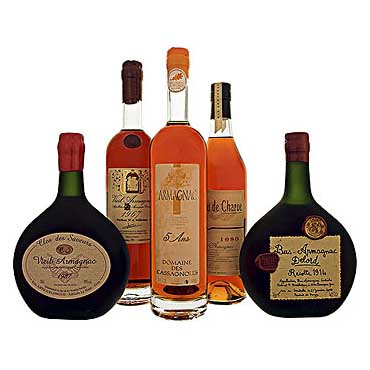Category: How to make Armagnac
What is White Armagnac?
When you think of Armagnac, the image that usually comes to mind is a golden-hued brandy, aged in oak barrels and enjoyed by the fireside. However, Armagnac begins its life as a clear spirit, known as Blanche Armagnac. This unaged ‘eau-de-vie’ is a crystal-clear distillate made from white wine, using a blend of up to ten different grape varieties, most commonly Ugni Blanc and Colombard. Blanche Armagnac, such as Blanche de Cassagnoles, is intensely aromatic, offering fresh and vibrant flavours that are not found in its aged counterparts. Upon distillation, it carries fruity and floral notes of pears, white peaches,… Read more
Trellising Vines in Armagnac
Just like in Cognac, the Armagnac region suffered from the severe spring weather with the heaviest rainfalls recorded since 1952! Thankfully the barometer has now stabilised and trellising has begun. This essential activity supports the vegetation ensuring good aeration of the grapes and minimal shoot damage by wind. Ripening is also optimised, as leaf exposure to the sun improves and thus, encourages photosynthesis. Of great ecological importance is the efficiency of phytosanitary treatment – the arrangement of the leaves on trellised plants helps this to improve. Finally, trellising also facilitates passage between the vines reducing time spent on viniculture and… Read more
The Ancient Art of Tasting Armagnac
Armagnac is probably the oldest known wine spirit in the world but the art of distillation was introduced by the Arabs between 1411 and 1441. In the department of France known as the Landes, they produced an agua ardente, or fire water, which was used initially as a therapeutic cure. Tasting Armagnac for pleasure ensued when it was established that storing the spirit in barrels developed desirable flavours. Armagnacs are the earliest examples of distilled wines known in France. Traditionally they are made using the Folle grape although others, including Colombard, Ugni Blanc and even more recently, the Baco all… Read more

The Difference Between Armagnac and Cognac Production
The difference between armagnac and cognac production is considerable. Originally the predominance of Ugni Blanc and to a very much lesser degree, the Folle Blanche and Colombard grapes in the vineyards of Cognac provided a basis for Armagnac production. Now the use of Folle Blanche is considerably greater and another grape variety is also allowed. Known as Baco, it is a cross between the Folle Blanche and the Noah, a grape not known for making quality wine but in many ways ideal for armagnac since it crops relatively late and in good quantities. As with cognac the winemaking is relatively basic… Read more

2015 – A Good Year for Armagnac
According to the regulatory body representing Armagnac producers, the BNIA (Bureau National Interprofessionnel l’Armagnac), Armagnac distillation started on 8 October, the earliest date in living memory. Favourable weather conditions in the spring got the vines off to a good start. This was followed by a very hot July, and then the “right” amount of rain in August, which helped to speed up grape maturation. As a consequence, harvesting started two weeks earlier than usual on 10 September. “It is important to harvest early as the producers are looking for wines that are high in acidity and low in alcohol for… Read more
Vintage Armagnacs
The region around Condom in Gascony, known as Gers, is famous for its armagnacs and in particular vintage armagnacs. They are made using grapes similar to those used for making cognacs but by using a single or continuous distillation method. The distillation range is between 52 – 72 %abv which allows a greater fruitiness in the spirit, although usually at the expense of smoothness and refinement of the brandy. In recent years it has become much more difficult to buy vintage armagnacs as there has been a huge demand for bottles with numbers on. The armagnac market is only about… Read more
How to make Armagnac – Serving and enjoying
Right from the 15th century, the English Kings have come and gone from the armagnac producing region we know as Gascony. The is near perfect for the production of the wines and brandies which have been enjoyed and shipped all over the world. The fruitier flavours than those from the cognac region to the north, and the slightly coarser qclimateualities of armagnac have created a uniqueness that cannot be rivalled anywhere else in the world. The lower distillation range and use of the vertical plate stills, whereby only a single distillation is necessary, is suited well to the fruitier Folle… Read more
How to make Armagnac – The changing ages
Armagnacs, as we have discovered earlier, are distilled at a lower range than the cognacs made a couple of hundred miles to the north, and for some reason the alcoholic strength seems to diminish more slowly than does cognac. The barrels have traditionally come from the local forest of Monlezun which locals believe have emphasised the heaviness of the spirit, which comes from a combination of both the soil and grape varieties. Due to the shortage of the local Gascon oak, producers have been forced to experiment with the cognac woods from both the Limousin and Tronçais forests. This has… Read more
How to make Armagnac – The stills and maturation
The armagnac still in its most used current form is a relatively recent invention, first perfected by a local peasant known as Verdier, who gave it it’s name in the 19th century. Rather like cognac, a super heater is used to warm the wine before it passes into the top of the still, to pass down over the plates until it reaches the bottom one. The spirit rises back to the top and is passed back to the condenser or super heater where it passes through coils, warming the wine as it goes. It is of course a very efficient… Read more
How to make Armagnac – The distillation method
The wines of armagnac are fairly basic, in itself no bad thing. The traditional winemakers eschew the use of sugar, sulphur dioxide and other additives, instead relying on the natural yeasts in the grapes. Unlike the Cognaçaise, wines in Armagnac may be pressed with the continuous presses which are forbidden in Cognac. These are often clumsily operated and allow through pips, skins and other impurities which in many cases further improve the richness of the spirit. This is further assured by the use of the continuous still which allows the spirit to be made without having to stop and recharge… Read more
